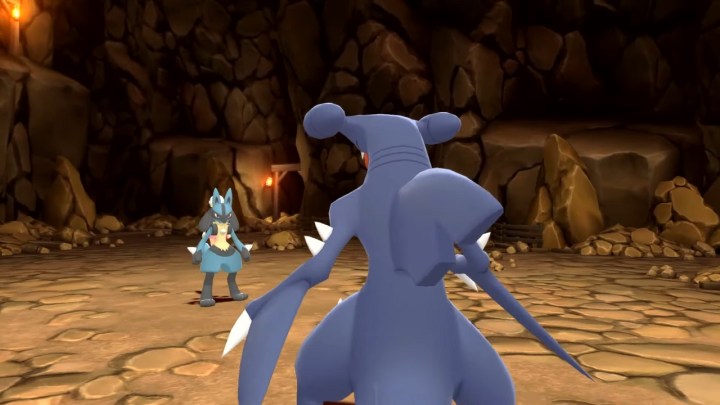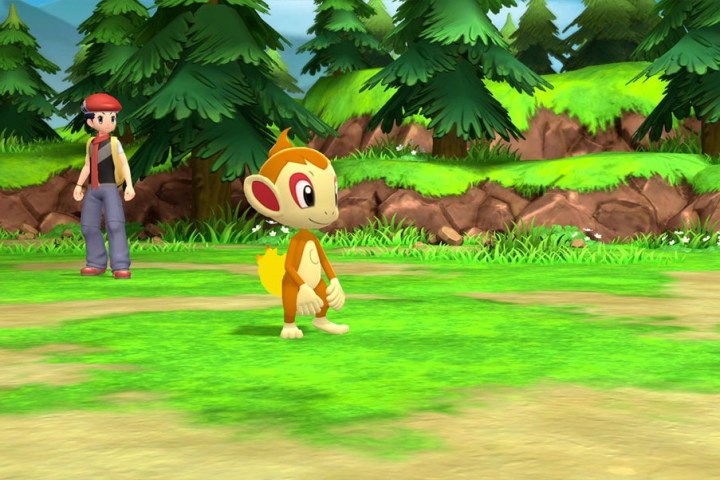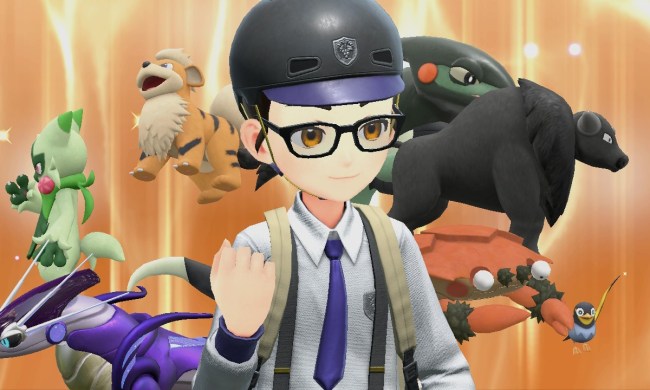Pokémon started off as a very casual RPG title. There were a number of types — fire, water, grass, and so on — that each had strengths and weaknesses. Under the surface, though, there were more mechanics only the hardcore players even knew about. Once the third generation of games hit, a brand new factor in how your Pokémon would differ from another of the exact same type was introduced. To most people, this was just a cool little bit of personalization; however, we now know that Natures do have a statistical impact on your favorite pocket monster’s potential.
Natures came about with Pokémon Ruby and Sapphire, and the mechanic has stuck around ever since, including with the recent remakes Pokémon Brilliant Diamond and Shining Pearl. Every Pokémon you catch will now come with a specific Nature that will make them stronger in one aspect or another. This can be rather frustrating when you finally catch that rare Pokémon you’ve been hunting, only to discover it has a Nature that works against it. That’s why we’ve broken down how to change a Pokémon’s Nature in Pokémon Brilliant Diamond and Shining Pearl.
See more
- How to level up fast in Pokémon Brilliant Diamond and Shining Pearl
- Pokémon Brilliant Diamond and Shining Pearl: Grand Underground guide
- All Legendary Pokémon locations in Brilliant Diamond and Shining Pearl
What are Pokémon Natures?

If you never got too deep into all the hidden or deeper values running under the surface of the Pokémon games, Natures probably didn’t mean much to you. At most they were just a bit of flavor text to tell you what kind of personality a Pokémon had, such as Bashful, Quiet, or Sassy. These are more than just personality traits, though. Natures actually have a direct impact on which stats that Pokémon will be more proficient in, and which they will lag behind in.
You can see what Nature any Pokémon has by going into the menu and selecting the Pokémon tab. From here, simply pick the Pokémon you want to check and hit Check Summary to see their Nature.
Natures affect two of the five stats a Pokémon has: Attack, Speed, Defense, Special Attack, and Special Defense. One of these will get a 10% stat increase as they level up, while another will have a 10% decrease depending on the Nature. This can make a big difference for certain Pokémon since you wouldn’t want a monster that has moves based on their Attack stat to have a Nature that is reducing that stat, especially over time. There are also five Natures that a Pokémon can get that have no impact on their stats whatsoever. These mean their stats will grow evenly, which can also be good or bad depending on the Pokémon.
Aside from stats, Natures also play a role in what Poffins a Pokémon will like most. This is less important, but since Pokémon Brilliant Diamond and Shining Pearl introduced Super Contest Shows, it is another factor that you will want to pay attention to.
How to change a Pokémon’s Nature

So, you finally got that Pokémon you’ve been on the hunt for only to realize its Nature completely goes against its strengths. Thankfully you’re not completely out of luck and don’t need to start grinding out battles again to find another one and hope it has the Nature you’re looking for. There are three methods for getting a more desired Nature, though the last one is a bit of an exploit and somewhat of a grind.
The first method is to use an item that wasn’t in the original version of the games, first showing up in Pokémon Sword and Shield but has been retroactively included in Pokémon Brilliant Diamond and Shining Pearl. These items are simply called Mints. These are rare items that come in 25 different flavors — one for each Nature — and are specifically designed for you to feed to your Pokémon in order to change their Nature to whatever you like.
The only downside to this foolproof method is that you can’t access Mints whenever you like. These are endgame items you need to purchase from the Battle Tower shop, which you can only enter after you beat the Elite Four in the main campaign and earn the National Pokédex. Each Mint costs a hefty 50 BP to purchase, so getting even one will require winning quite a few matches in the Battle Tower to earn enough BP.
The next method involves breeding. This is a bit more time consuming — if you haven’t already unlocked the Battle Tower and earned 50 BP that is — but can at least be done before beating the base game. All you need for this method is a Ditto and an Everstone. This Ditto can’t just be any regular old Ditto, though — it will need to have the Nature you want to have on your desired Pokémon.
By breeding your desired Pokémon with a Ditto — which can breed with any Pokémon regardless of gender (the only exceptions being Legendary Pokémon) — that is holding an Everstone, the resulting offspring will be guaranteed to have the same nature as the Pokémon parent that was holding said stone.
Everstones themselves can be traded for with an NPC in Snowpoint City. Go to the house in the northwest to trade a Haunter for one, but you will also need to trade a Medicharm as well. Medicharms can be dug up in the Grand Underground via the digging mini-game.
One of the great quality of life features added in Pokémon Brilliant Diamond and Shining Pearl is the ability to actually see what Pokémon you’re going to encounter in the wild before engaging them in battle. This makes hunting for that specific Pokémon much easier, and it can also be manipulated to help you get the ideal Nature. Once you spot the Pokémon you’re after, make a quick save before starting the battle. Then, after battling and catching said Pokémon, check their Nature. If it isn’t what you’re after, reload that save and start the battle again. Because Natures are randomly assigned, it will have a different one every time you reload. All you have to do is have enough patience to reload enough times to get the Pokémon to have what you’re looking for.
All Pokémon Natures in Pokémon Brilliant Diamond and Shining Pearl

In total, there are 25 Natures a Pokémon can be randomly assigned in Pokémon Brilliant Diamond and Shining Pearl. Here are all the Natures in the game, which stats will get a positive boost, and which will be negatively affected.
- Adamant: ↑Attack ↓Sp. Atk.
- Bashful: No impact on stats.
- Bold: ↑Defense ↓Attack.
- Brave: ↑Attack ↓Speed.
- Calm: ↑Sp. Def ↓Attack.
- Careful: ↑Sp. Def ↓Sp. Atk.
- Docile: No impact on stats.
- Gentle: ↑Sp. Def ↓Defense.
- Hardy: No impact on stats.
- Hasty: ↑Speed ↓Defense.
- Impish: ↑Defense ↓Sp. Atk.
- Jolly: ↑Speed ↓Sp. Atk.
- Lax: ↑Defense ↓Sp. Def.
- Lonely: ↑Attack ↓Defense.
- Mild: ↑Sp. Atk ↓Defense.
- Modest: ↑Sp. ↓Atk Attack.
- Naive: ↑Speed ↓Sp. Def.
- Naughty: ↑Attack ↓Sp. Def.
- Quiet: ↑Sp. ↓Atk Speed.
- Quirky: No impact on stats.
- Rash: ↑Sp. Atk ↓Sp. Def.
- Relaxed: ↑Defense ↓Speed.
- Sassy: ↑Sp. Def ↓Speed.
- Serious: No impact on stats.
- Timid: ↑Speed ↓Attack.


